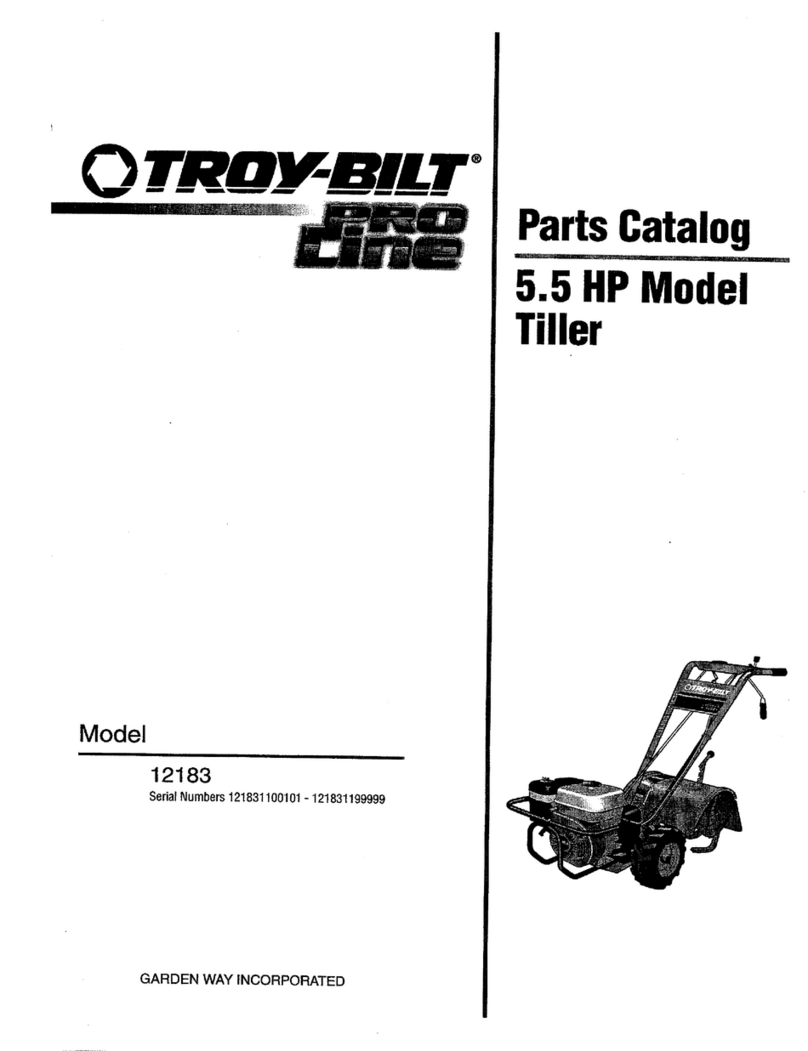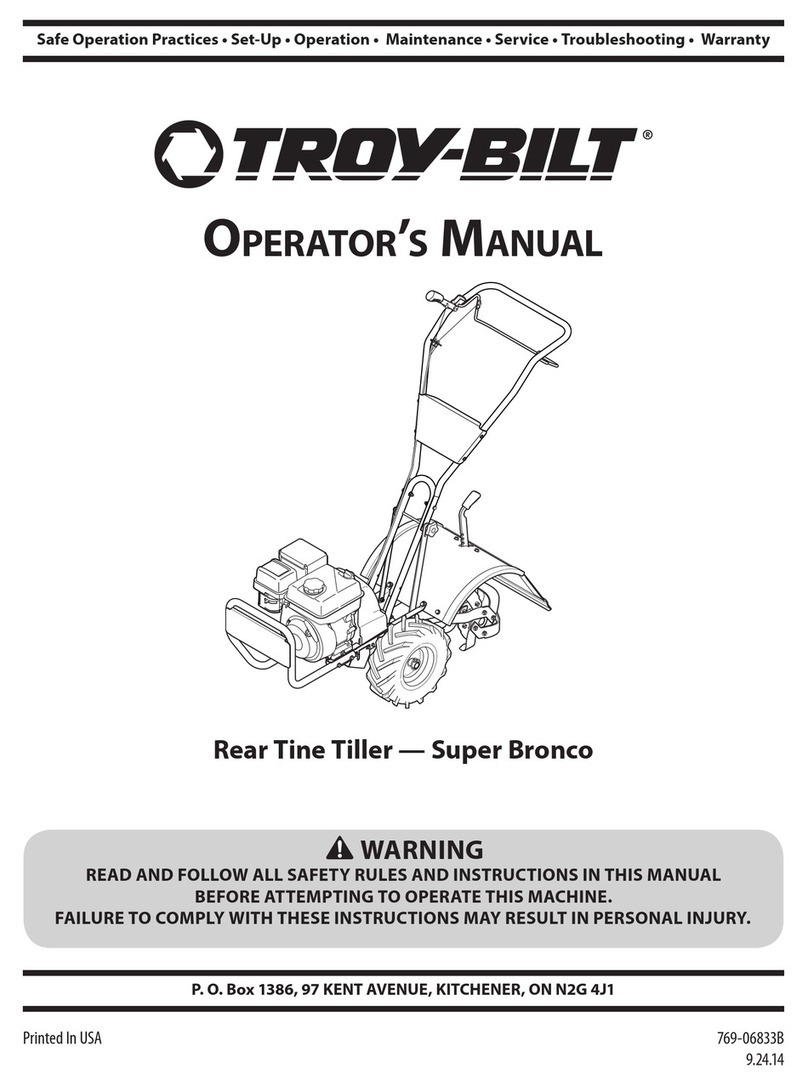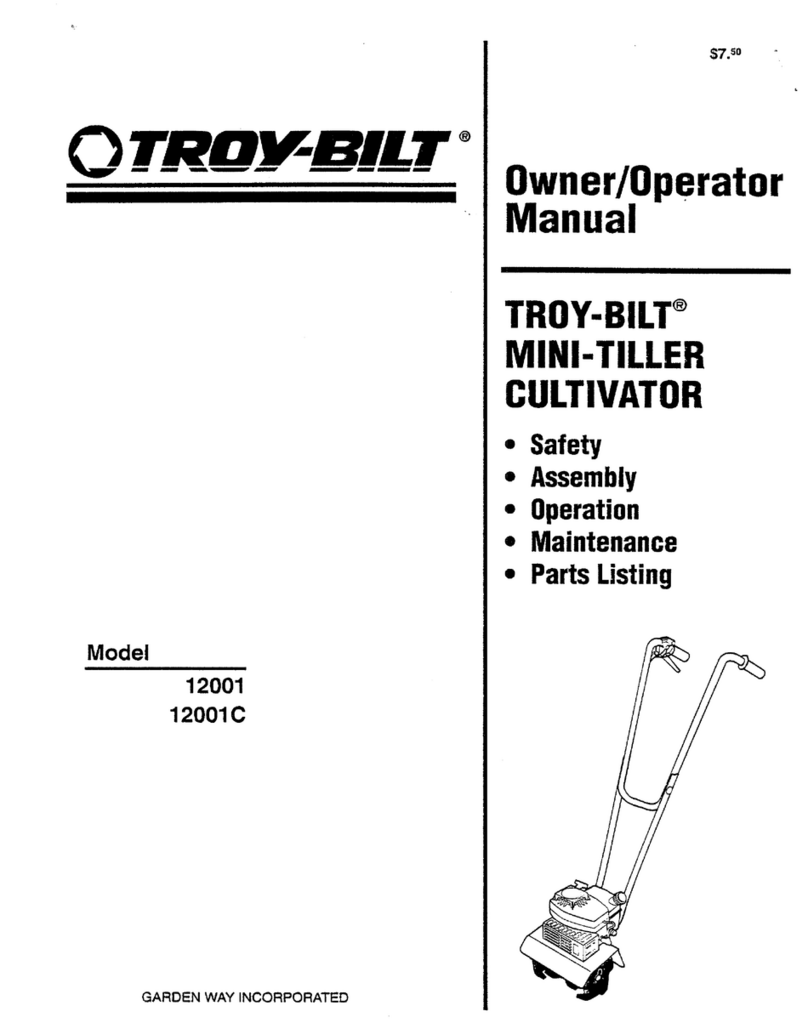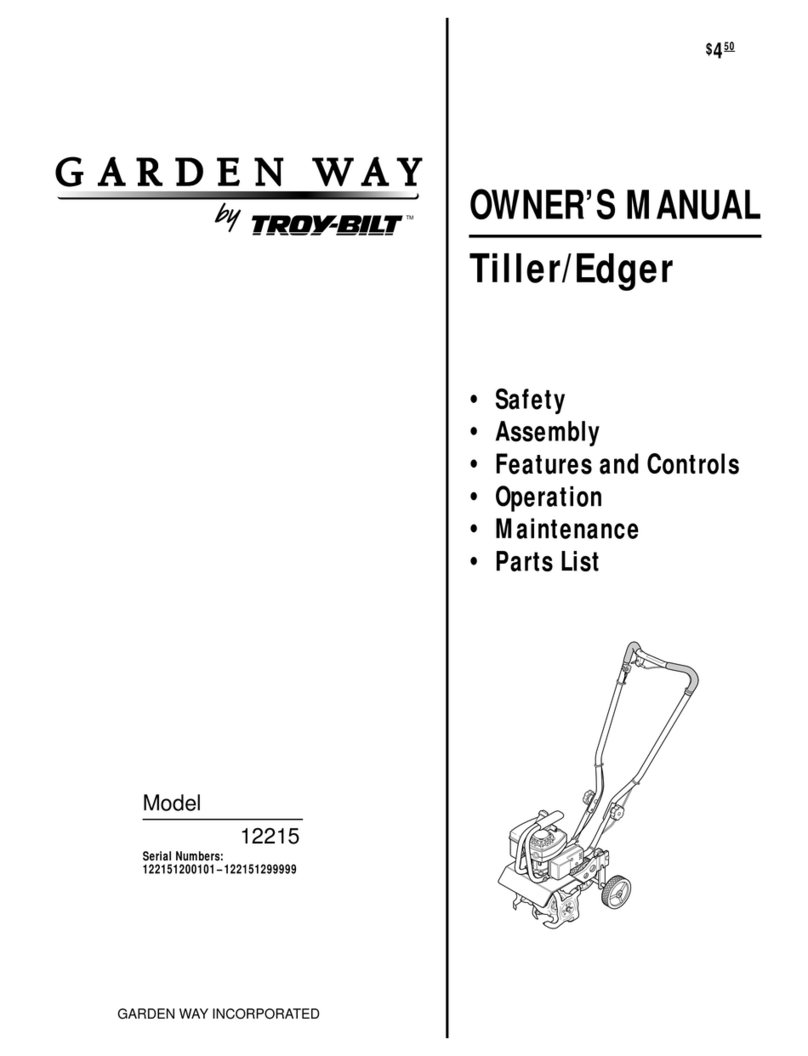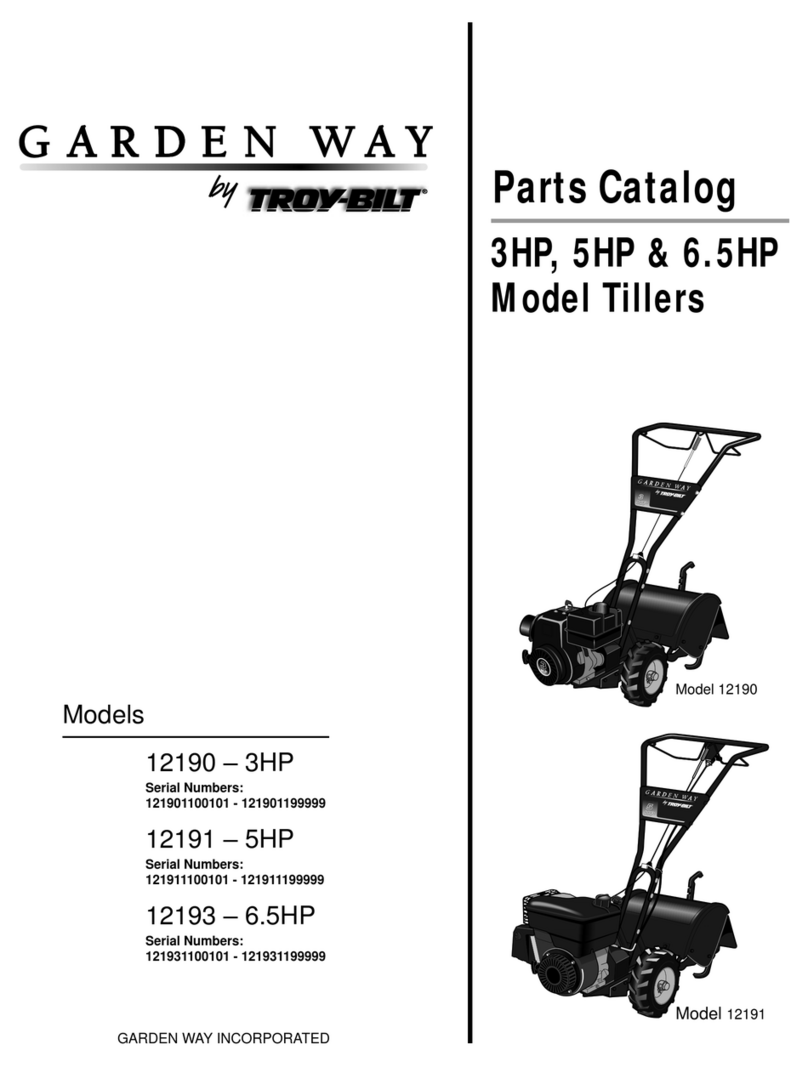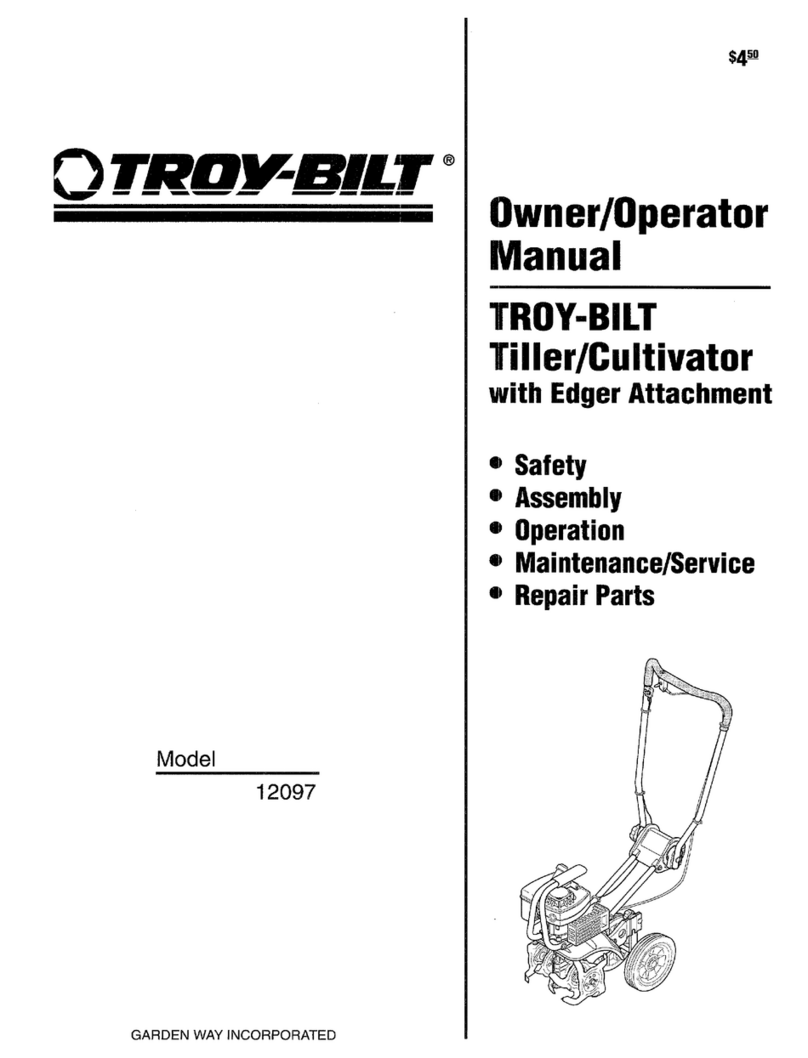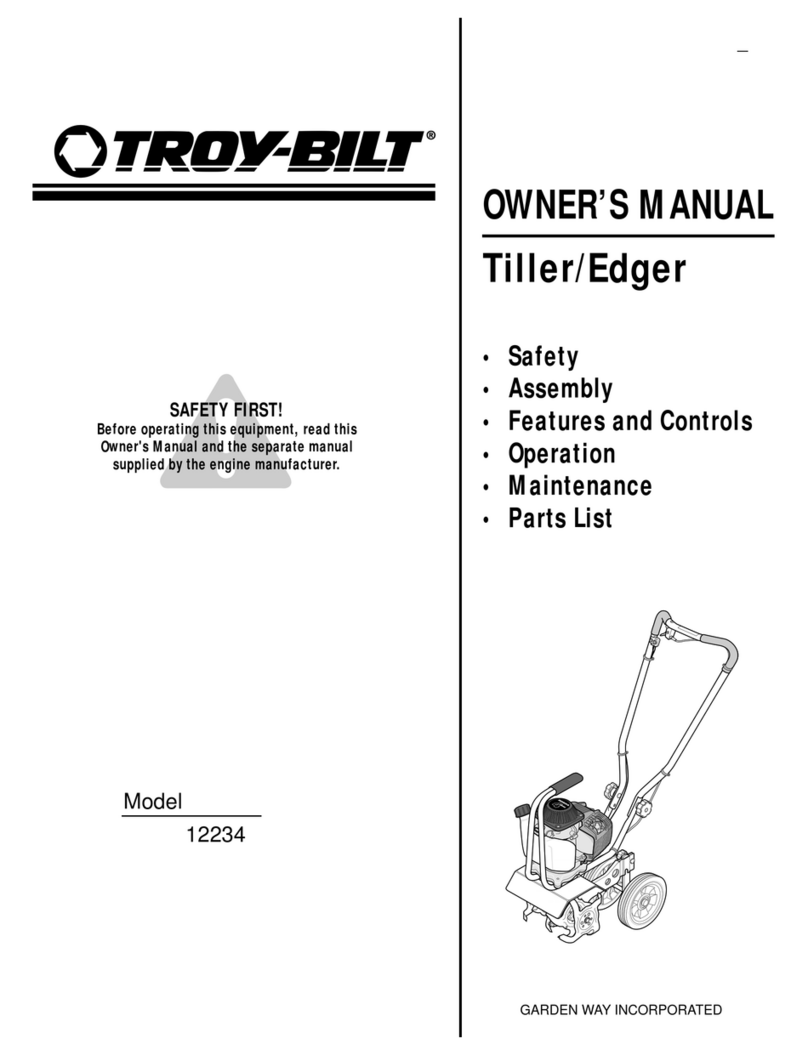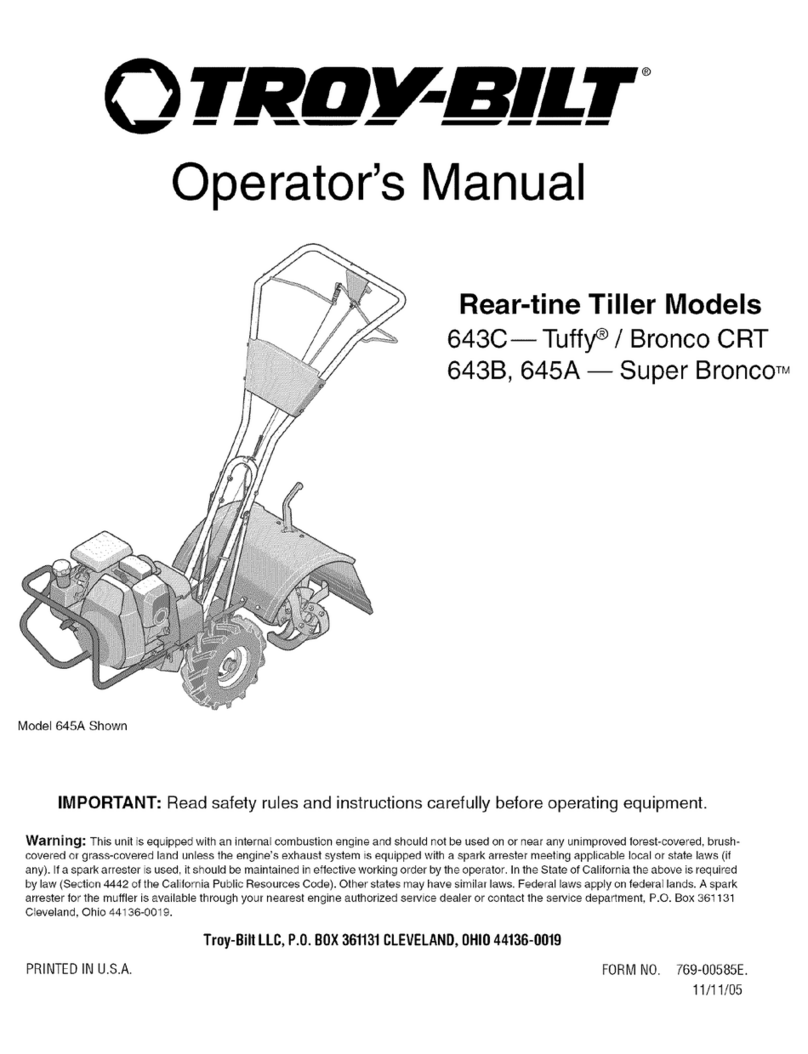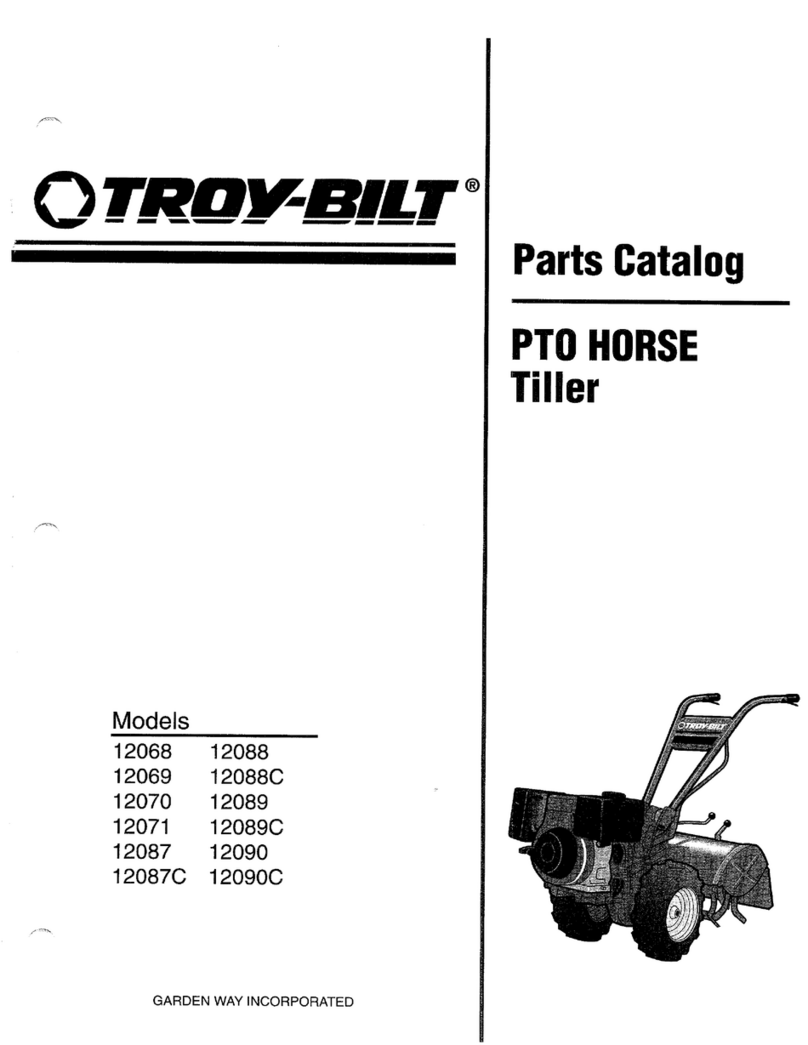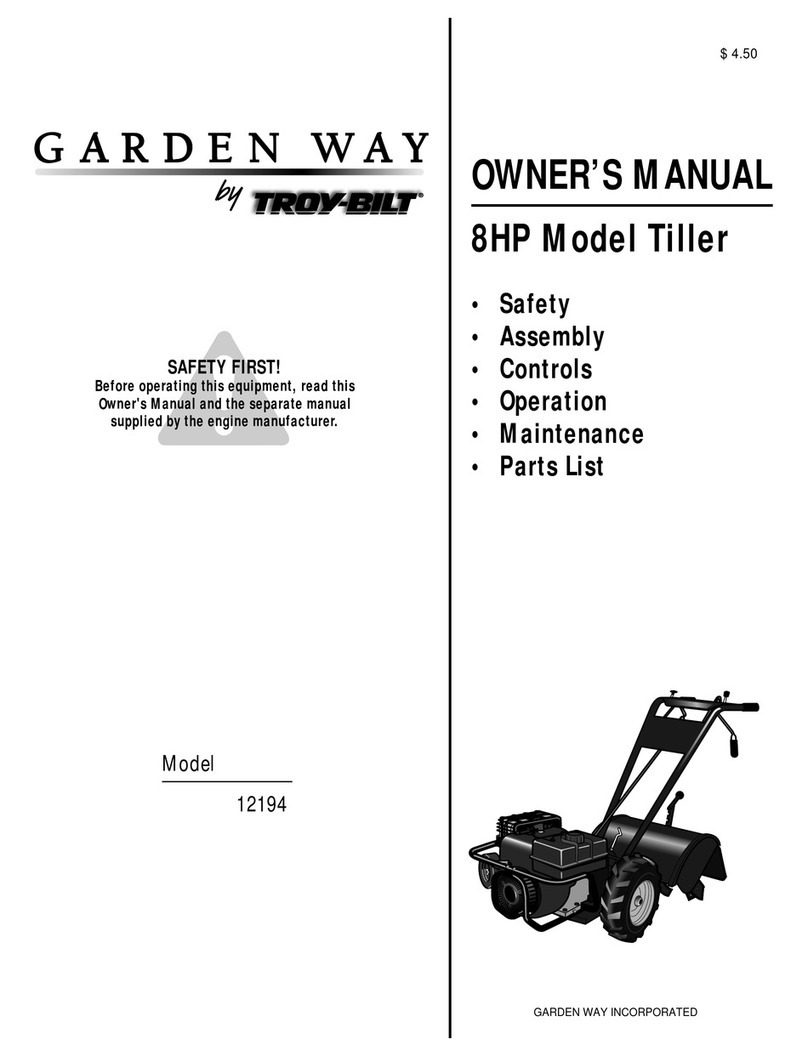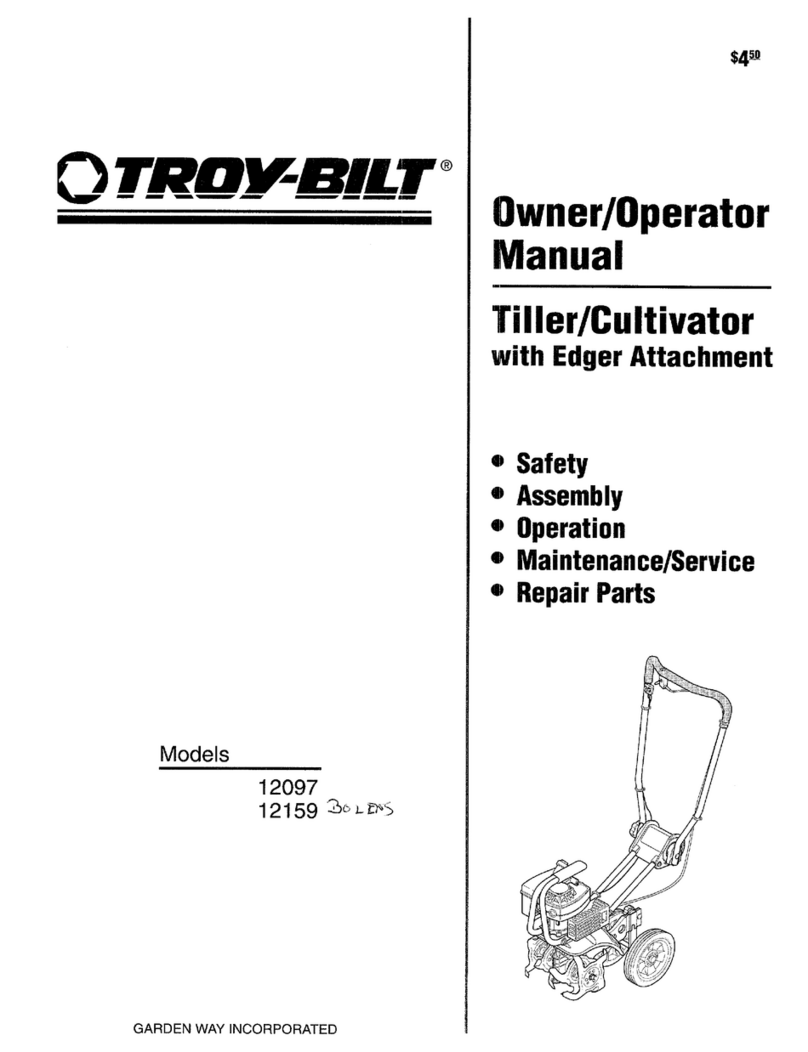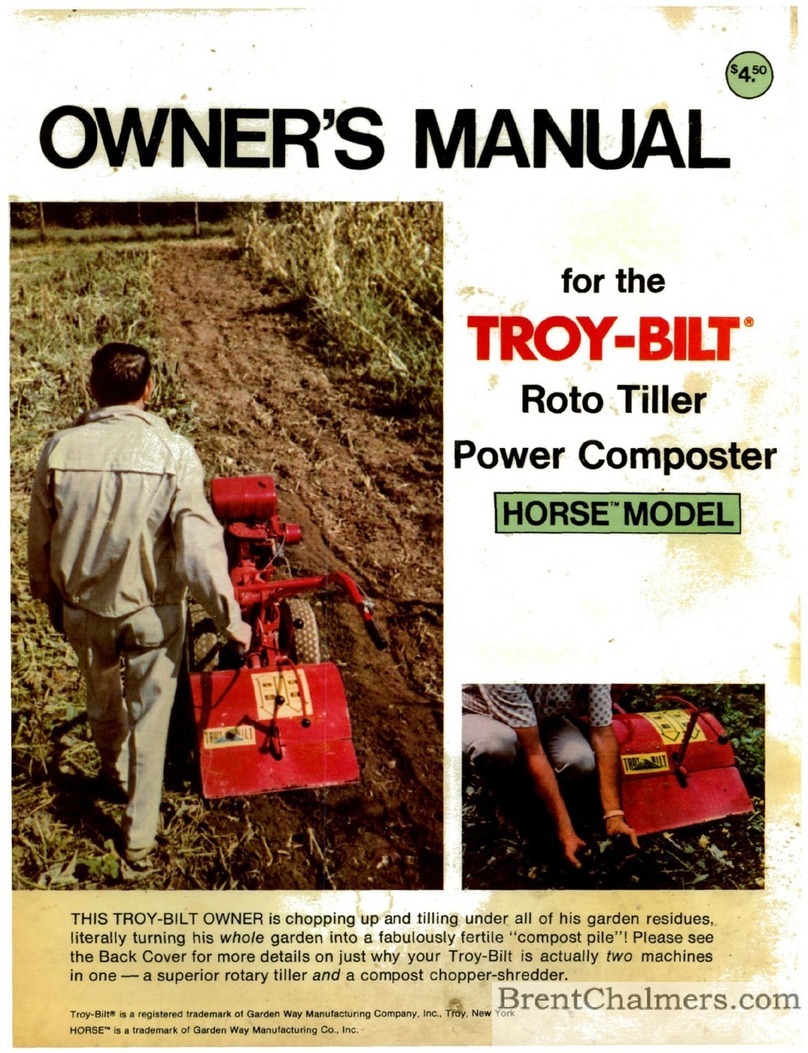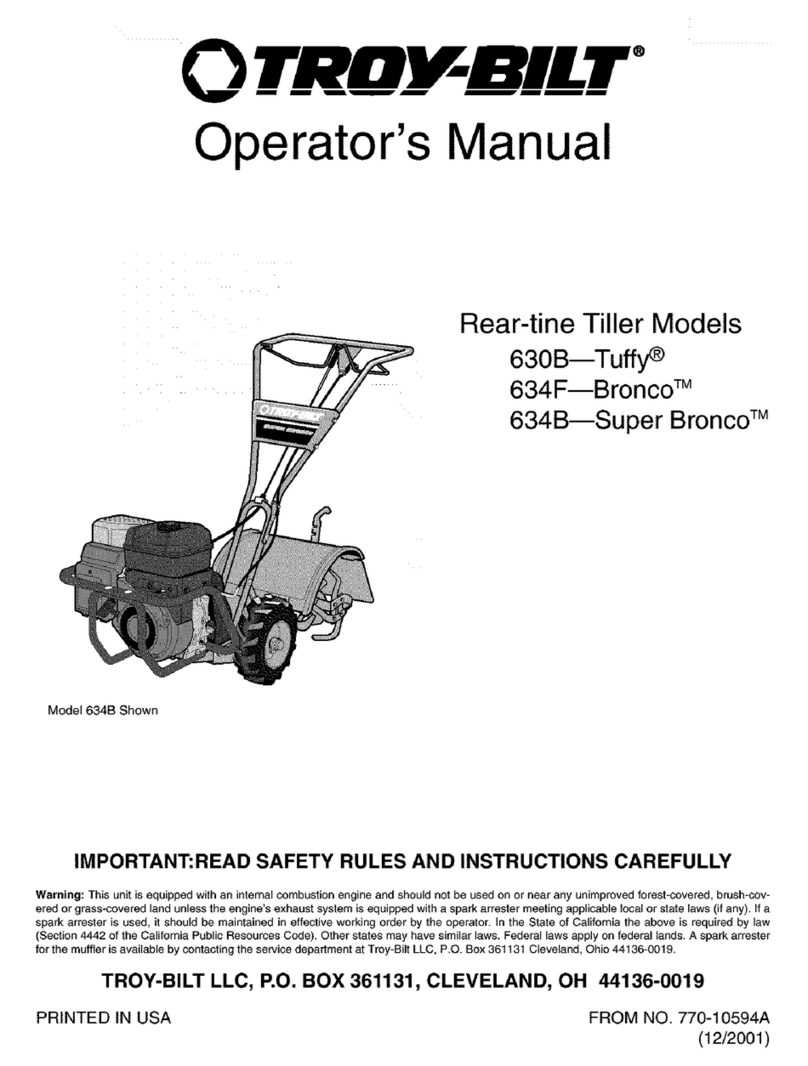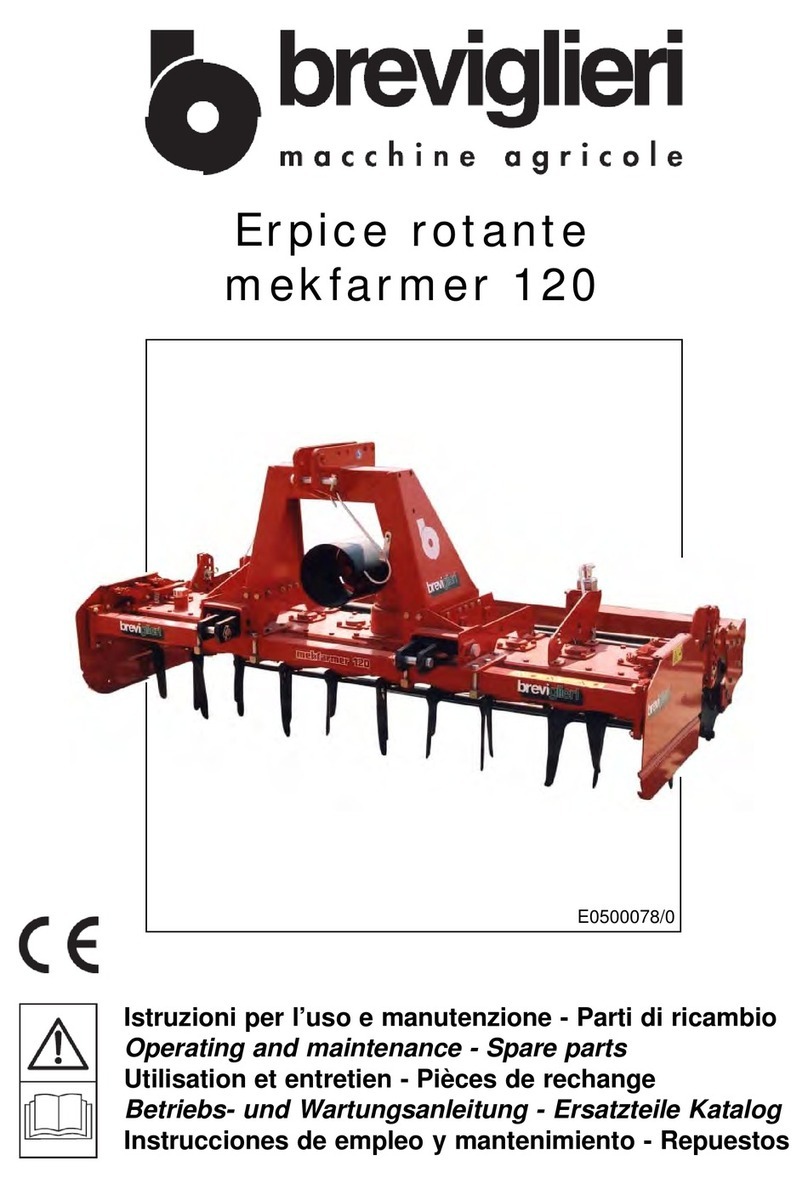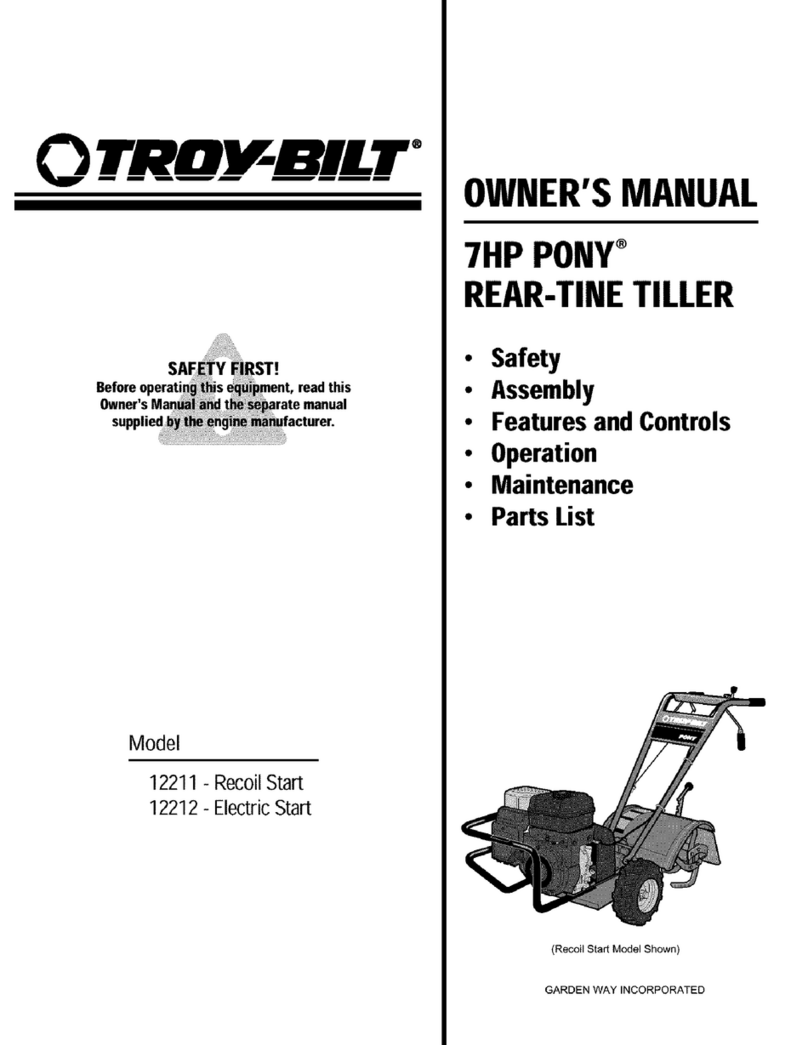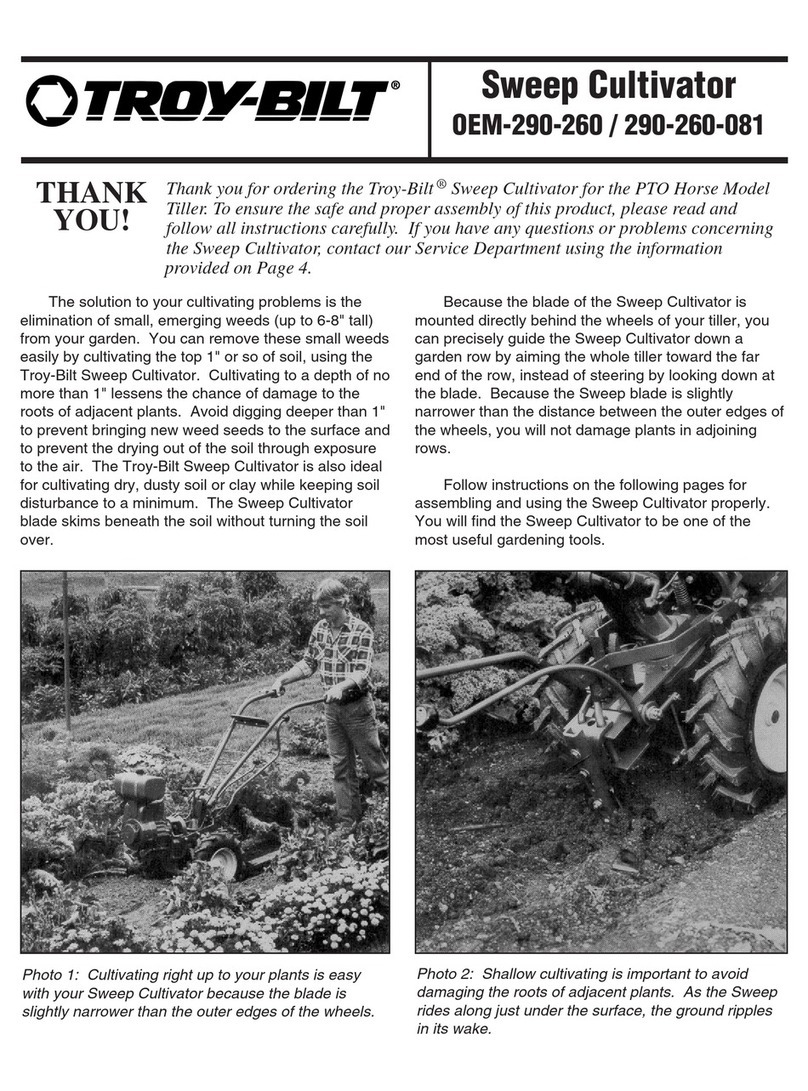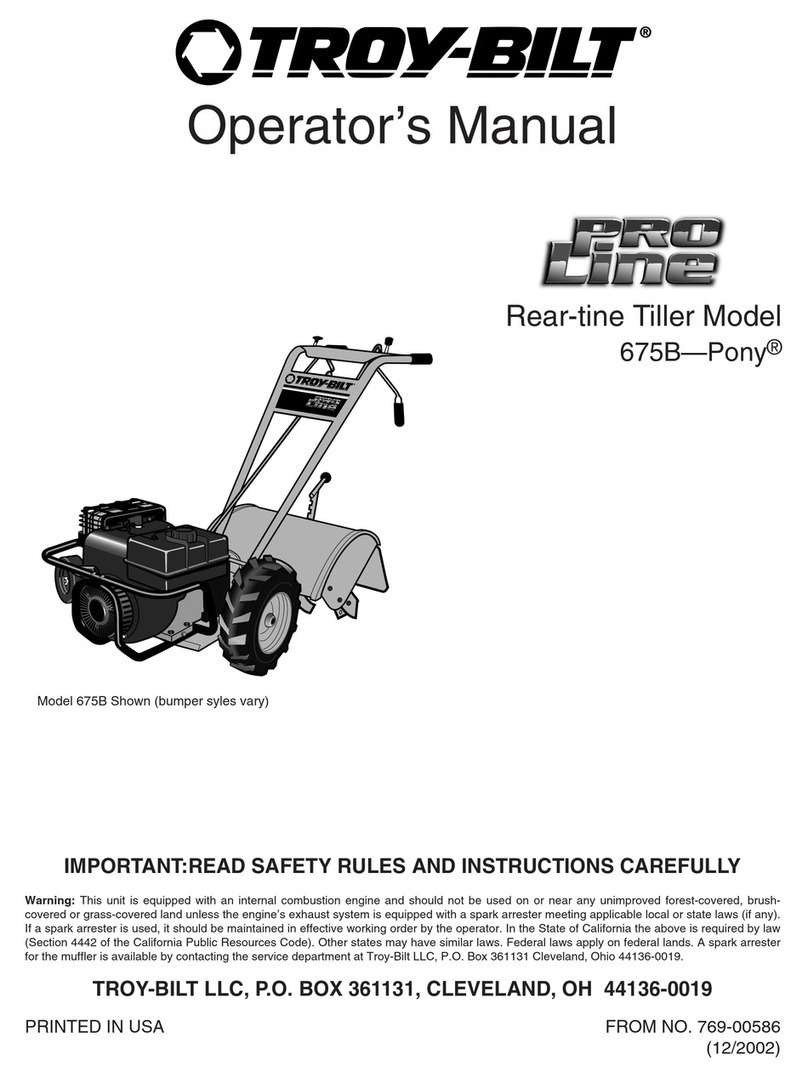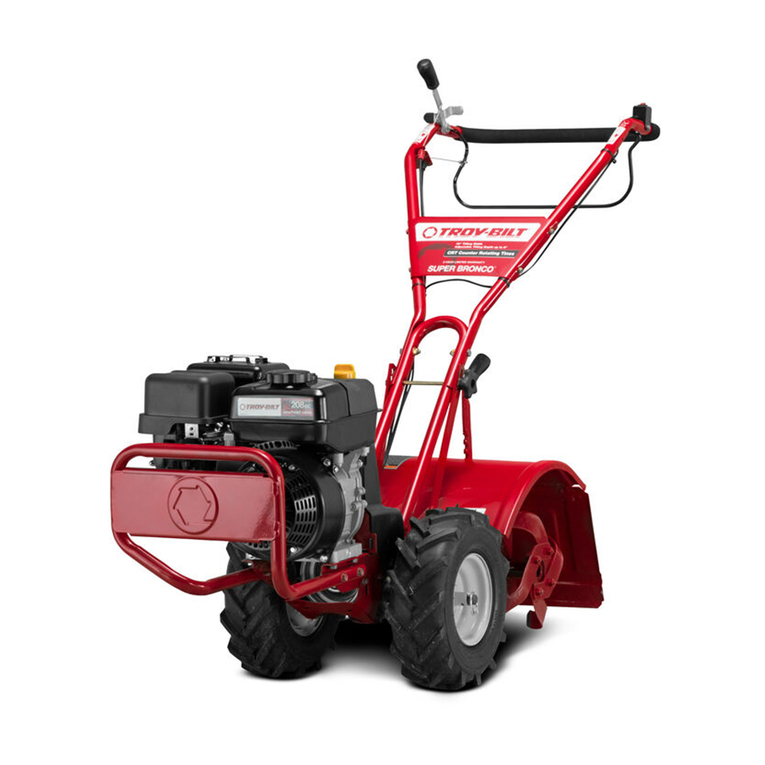
7. Before leaving the tiller unattended, stop the
engine. Remove the Ignition Key on electric start
models. Disconnect the spark plug wire and pre-
vent it from touching the spark plug. Move the
Wheel Gear
Lever
to "ENGAGE" on Econo-
Horse and Pony models. On Junior models, the
Wheel Drive Pins must engage the wheels.
8. Before cleaning, repairing, or inspecting, stop
the engine, remove the Ignition Switch Key on
electric start models, and make certain all moving
parts have stopped. Disconnect the spark plug
wire and prevent it from touching the spark plug
to prevent accidental starting. On electric start
models, always remove the cable from the nega-
tive side (
-)
of the battery.
9. Always keep the flap on the tine hood down
when operating the tiller, except when using the
hiller/furrower attachment.
10.
Nev
er
operate
the
till
er with
out
proper
guards, plates, or other protective safety devices
in place.
11. Do not run
the
engine indoors; exhaust
fumes are dangerous.
12. Keep children and pets away.
13. Never operate the tiller under engine power if
the Econo-Horse or Pony Wheel Gear Lever is in
"DISENGAGE" (FREEWHEEL), or if the Junior
Wheel Drive Pins do not engage the wheels. In
this position, the wheels will not hold the tiller
back and the revolving tines could propel the
tiller rapidly, possibly causing loss of control.
Always move the Wheel Gear Lever to "EN-
GAGE" (or, on the Junior, ENGAGE the wheels
with the Wheel Drive Pins) before starting the
engine or engaging the tines / wheels with the
Forward Clutch or the Maneuvering Clutch.
14. Be aware that the tiller may unexpectedly
bounce
upward
or jump forward if the t
ines
should strike extremely hardpacked soil, frozen
g
round
, or
bur
ied
obstac
les such as
large
stones, roots, or stumps. If you are in doubt
about the tilling conditions, always use the fol-
lowing operating precautions to assist you in
maintaining control of the tiller:
a. Walk behind and to one side of the tiller,
using one hand on the handlebars. Relax
your arm, but use a secure hand grip.
b. Use shallower depth regulator settings,
working gradually deeper with each pass.
c. Place the forward drive belt in its LOW
Range position (Econo-Horse only). Use
slower engine speeds.
d. Clear the tilling area of all large stones,
roots and other debris.
e. Avoid using downward pressure on handle-
bars. If need be, use slight upward pressure
to keep the tines from digging too deeply.
f. Before contacting hardpacked soil at the end
of a row, reduce engine speed and lift han-
dlebars to raise tines out of the soil.
g. In
an
eme
rge
ncy
,
stop
the
t
ines
and
wheels
by
releasing
whicheve
r
Clutch
Lever
you
have engaged. Do
not
attempt
to restrain the
tiller
.
15. Do not overload the tiller's capacity by at-
tempting to till too deeply at too fast a rate.
16. Never operate the tiller at high transport
speeds on slippery surfaces. Look behind and
use care when backing up.
17. Do not operate the tiller on a slope that is too
steep for safety. When on slopes, slow down and
make sure you have good footing. Never permit
the tiller to freewheel down slopes.
18. Never allow bystanders near the unit.
19. Only use attachments and accessories that
are approved by Troy-Bilt Manufacturing Co.
20. Use tiller attachments and accessories when
recommended.
21. Never operate the tiller without good visibility
or light.
22. Never operatethe tiller if you are tired, or under
the influenceof a
lcohol
,drugsor medication.
23. Do not change the engine governor settings or
overspeed the engine.
24. Do not touch engine parts which may be hot
from operation. Allow parts to cool before inspect-
ing, cleaningor repairing.
25. The battery on electric start model tillers con-
tains sulfuric acid. Avoid contact with skin, eyes, or
clothing. Keepout of the reach of children.
Antidote-External Contact: Flush immediately
with lots ofwater.
Antidote-Internal: Drink large quantitiesof water
or milk. Follow with milk of magnesia, beaten
egg or vegetable oil. CALL A PHYSICIAN IM-
MEDIATELY.
Antidote-Eye Contact: Flush with water for 15
minutes. GET PROMPT MEDICAL ATTEN-
TION.
26. Batteries produce explosive gases. Keep
spar
ks, flame, and smoking materials away.
Ventilate when charging batteries or when using a
batteryin an enclosed space.
ALWA
YS wearsafety
goggles when working near batte
ries.
27. Please remember: You can always stop the
tines and wheels by releasing the Forward Clutch
Lever or the Maneuvering Clutch Lever (whichever
lever you have e
ngaged
) or by moving the T
hrottle
Control Leverto
STOP.
28.
To
load or unload the tiller, see the instructions
in Section4 of this Manual.
5
